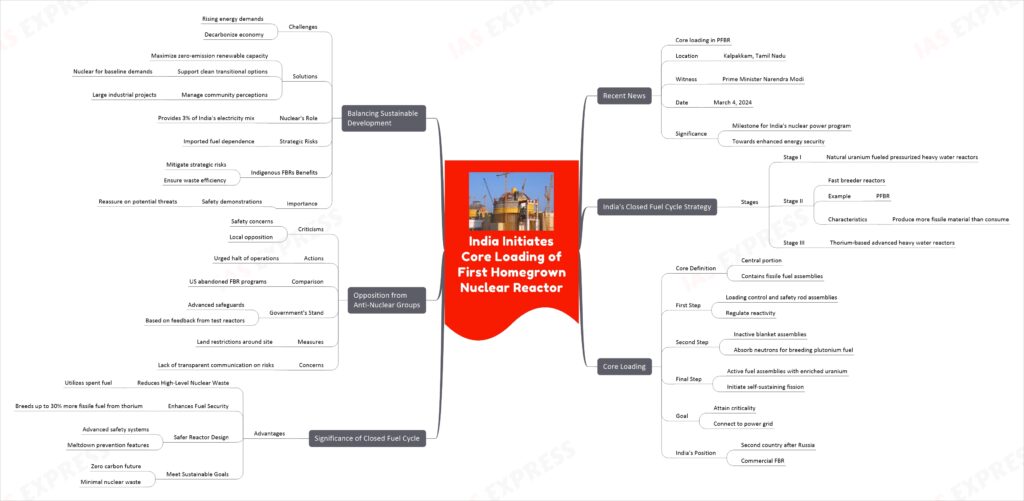India Initiates Core Loading of First Homegrown Nuclear Reactor

India’s first indigenous Prototype Fast Breeder Reactor (PFBR) in Kalpakkam, Tamil Nadu, marks a significant advancement in the country’s nuclear energy capabilities. With Prime Minister Narendra Modi witnessing the core loading activities, this development is pivotal for India’s three-stage nuclear power program, aimed at enhancing energy security through a closed fuel cycle strategy. This strategy includes utilizing spent fuel to reduce waste, breeding more fissile material, and advancing towards a zero carbon future with minimal nuclear waste, thereby supporting sustainable energy goals. Despite facing opposition over safety concerns, the project underscores India’s commitment to balancing rising energy demands with the need to decarbonize, highlighting the strategic importance of indigenous nuclear technology in ensuring fuel security and environmental sustainability.

